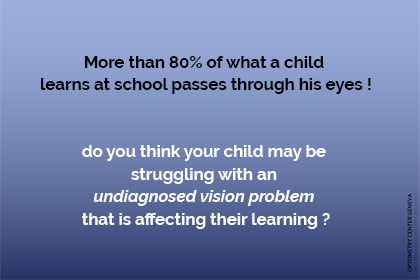
Improving sleep in children with GoodNight glasses
Improving sleep in children with GoodNight glasses Recently, a mother came to the clinic with her 8-year-old daughter, concerned about persistent...

Official study on Goodnight glasses
Official study on Goodnight glasses Eugène Duvillard, inventor of Goodnight glasses, is proud to unveil the results of the official study on sleep...

Eyewear trends 2025
Eyewear trends 2025 In 2025, eyewear has become a true fashion accessory, featuring bold shapes, bright colors, and reinvented materials. In this...

Glasses that help you sleep...
Glasses that help you sleep... Click here to read the article INNOVATIVE A Geneva-based specialist has developed glasses that make it easier to fall...

Lutein and Zeaxanthin Supplementation Improves Dynamic Visual and Cognitive Performance in Children
Lutein and Zeaxanthin Supplementation Improves Dynamic Visual and Cognitive Performance in Children Supplementation with dietary neuro-pigments...

IBS LENSES, glasses that correct your vision and posture
IBS LENSES, glasses that correct your vision and posture What are IBS LENSES TM lenses? IBS LENSES TM ophthalmic lenses are highly innovative, with...

More than 80% of what a child learns at school passes through his eyes!
More than 80% of what a child learns at school passes through his eyes! do you think your child may be struggling with an undiagnosed vision problem...

A 3-year randomized clinical trial of MiSight lenses for myopia control
A 3-year randomized clinical trial of MiSight lenses for myopia control The results of this clinical trial demonstrate the efficacy of the MiSight...

Vision therapy for binocular dysfunction after brain injury
Vision therapy for binocular dysfunction after brain injury To prospectively evaluate the efficacy of vision therapy for the treatment of binocular...

An assessment of acquired stereovision in adulthood
An assessment of acquired stereovision in adulthood Despite binocular disorders in childhood, patients may be able to achieve stereopsis following...

Children with ADHD show altered eye movement patterns during reading
Children with ADHD show altered eye movement patterns during reading Data indicate that non-medicated children with pure ADHD show altered eye...

Vision a collaboration between eyes and brain
Vision a collaboration between eyes and brain Vision is neither present in the eyes nor in the brain, but results from the collaboration between the...

